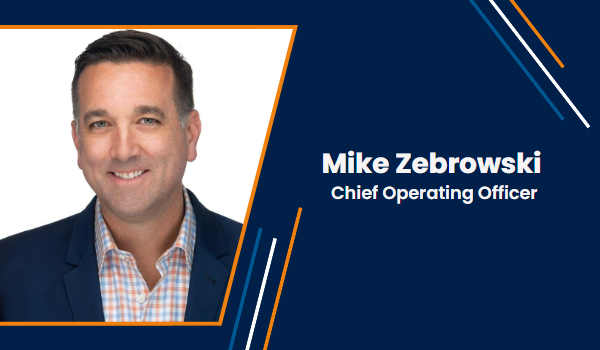Consumer expectations around technology have changed so much, that for an industry as far behind as financial services, it can seem impossible to catch up.
In just the past 20 years, smart phones, cloud computing, mobile devices and intuitive software design have radically changed the way the average person interacts with businesses and other enterprises, rendering the traditional office obsolete.
It’s happened so quickly that a lot of businesses have whiplash, said Mike Zebrowski, chief operating officer of Docupace, a back-office platform for wealth management companies.
“Back when I started working, I couldn’t wait to get into the office, because the technology back then was so much better than what we had at home as consumers,” said Zebrowski. “What I mean by that is, at the office I had high-speed internet, I had the latest computers, and when I got home I was dialing up with AOL or Prodigy, over a line that barely gave me enough bandwidth to load an image—the office was so much better.”
But then, around 20 years ago, the balance of technology started to change, said Zebrowski, beginning with the advent of Blackberry-like devices, primitive smart phones lacking today’s touch interfaces.
“It untethered me,” he said. “I didn’t even need to have a computer anymore, I can walk around with all this data in my pocket—and I loved the little keyboard.”
Over the past 10 years especially the balance of technology has shifted away from businesses and towards consumers, said Zebrowski. What that means is that consumers have easier access to best-available technology than businesses do, and because of that, the technology in formal workplaces is lagging behind consumer expectations.
In the financial industry, which due to regulation and, sometimes, the age of its practitioners, is slower to adopt technology and adapt to new consumer preferences than other industries, that means that advisors and business owners face a very steep up-hill climb to keep up with today’s technology.
That’s why Docupace benchmarks its tech not against other financial technology companies, but against consumer brands who are already operating on the cutting edge of technology—big tech brands like the FANG stocks—rather than wealth tech firms, banks or brokerages.
“We believe that people should expect the same technology that they can get if they’re on Instagram,” said Zebrowski. “That’s why we undertook a major effort this spring to re-do our user interface, and the benchmark we set was against consumer technology.”
Embrace Self Service
“In our industry, self service used to be a bad word,” said Zebrowski. “Advisors always felt like they had to concierge everything for their clients and their investors. Amazon really changed that. Self service is no longer bad.”
Zebrowski said the financial industry has shed most of its reluctance to embrace self service but wealth management in particular is still slow to implement more do-it-yourself capabilities in client portals and other interfaces.
Yet, inexorably, advisors are finding that there are a lot of things that clients don’t mind—or actually like—doing that the industry had once assumed investors just didn’t want to do. Tasks like updating account information, or moving money from one account to another.
“What we saw with online banking, then eventually Amazon, and now with the mobile apps that we all have on our phones, consumers now want to do that—and if they can’t, they get frustrated,” said Zebrowski. “So they don’t want to have to pick up a phone and call someone to move money. If I want to send money to my kids at college, I no longer do it through my bank. I don’t use my credit card company. It’s going to take me two seconds if I pull up the app I want, which is something like Venmo, and send the money instantly.”
In other words, most consumers will no longer wait for advisors to do tasks that they can do easily and immediately themselves using the phone in their pocket.
Smarter Consumers, Evolving Trust
Today’s consumers relate differently to the professionals and centers of influence who service their lives than those of past generations, said Zebrowski.
“If the doctor would say, ‘your cholesterol his high, take this pill,’ my parents without a doubt would just say give me the prescription, I’ll go get it filled and take the medication,” he said. “Today, what happens with consumers? Our doctors tell us one thing, then we’ll go back to Google and validate the information. We’re much more educated consumers than we were 10-15 years ago, and I think that also holds true in the financial services space.”
So when an advisor talks estate planning and recommends a product or account structure to solve a client’s problem, the client will now go back and validate what they’ve heard—predictive and generative AI can even help translate the industry jargon some advisors still use to give investors a clear idea of the costs and benefits of a recommendation themselves, independent from the financial advisor they once completely relied on.
Zebrowski believes advisors should embrace this new trust-but-verify mentality, and adopt technology that facilitates their clients’ varying levels of curiosity and independence.
“Clients want to be able to go in and validate information on their own, but they will not pull the trigger on messing with their nest egg, on buying a mortgage or on planning for their kids college future without talking to someone, even though they’ll go out and research it and validate it themselves,” he said. “They want to talk to an advisor who will coach them and reassure them that this is the right decision for you, based upon where you’re at. That’s why I believe AI will support the advisor. I don’t believe it or replace the advisor.”
Still Moving Cautiously
That doesn’t mean that financial companies should take the leap to immediately embrace AI and other emergent technologies, said Zebrowski.
“The financial services industry in general is risk averse, so they’re going to have to tread slowly into AI,” he said. “I do believe you’ll start to see some more predictive technology implemented that should make advisors more productive—and consumers more productive in how they interface.”
This type of AI implementation is like an extension of Google search’s “autocomplete” capability, where predictive analytics are used to complete a user’s task, whether they’re writing a sentence, entering a search phrase or looking up a ticker or account. Generative AI can take this capability a step further by also proactively answering questions or engaging in tasks like preparing and completing forms before a technology user has completely typed in their thought.
Ideally, over time, predictive analytics and generative AI will help take care of some of the slack in the wealth management industry today and help firms serve more clients with high-touch services, Zebrowski said.
To learn more about how Docupace can help your firm reach operational excellence, click here for a free demo.








